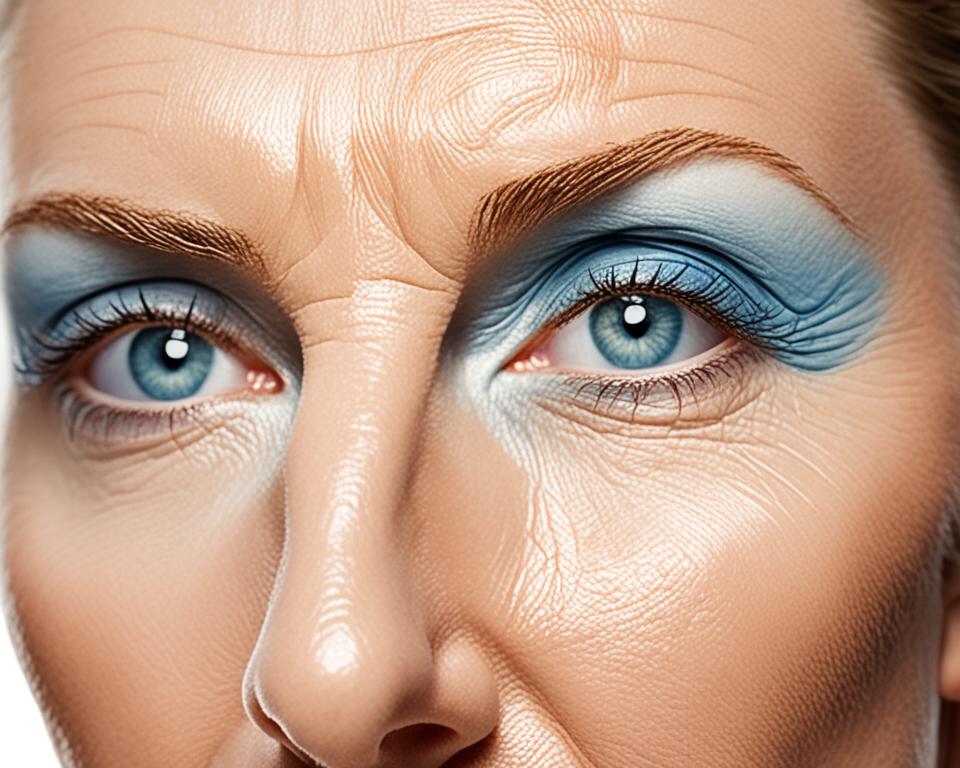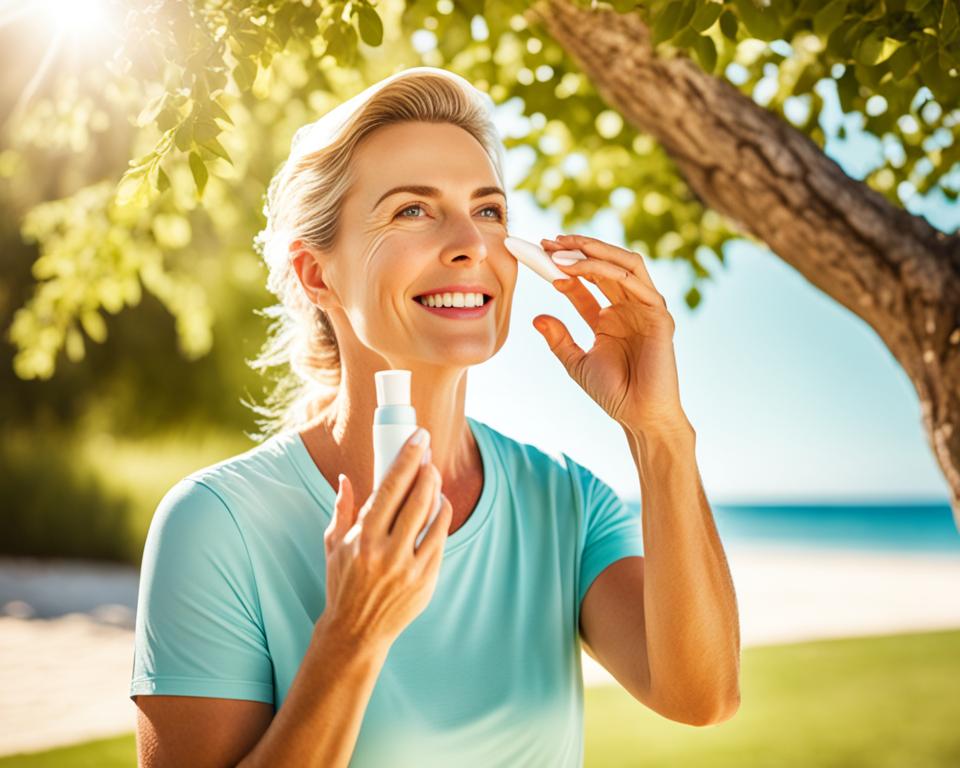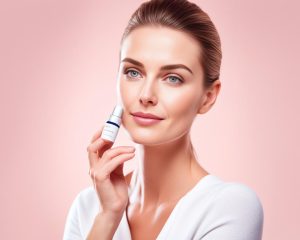
As we bask in the warm glow of the sun’s rays, it’s important to understand the potential consequences of prolonged sun exposure on our skin. Many of us may wonder, “Does the sun age your skin?” The answer is yes. The sun’s powerful UV radiation can have detrimental effects on the health and appearance of our skin.
Over time, sun damage can lead to accelerated skin aging. The harmful UV radiation can penetrate the skin, causing damage at a cellular level. Understanding the science behind UV radiation and its impact on our skin can empower us to take proactive measures to protect and preserve our skin’s health and youthfulness.
In this comprehensive guide, we will explore the various ways in which sun exposure can age our skin. From the effects on collagen and elasticity to the formation of age spots and the impact on skin texture and tone, each section will shed light on a different aspect of sun damage and aging.
Read more interesting information at ::beauty-hair-news
Understanding UV Radiation
When it comes to understanding the effects of sun exposure on the skin, it’s essential to explore the role of UV radiation. The sun emits different types of UV rays, including UVA and UVB, which can have detrimental effects on the aging process of the skin.
UV radiation, particularly UVA rays, can penetrate deep into the skin layers, leading to long-term damage. UVA rays can contribute to the breakdown of collagen and elastin, essential proteins that maintain the skin’s elasticity and youthful appearance.
On the other hand, UVB rays primarily affect the outermost layer of the skin. These rays can cause sunburn and play a significant role in the development of skin cancer. UVB rays also contribute to the acceleration of skin aging, including the formation of wrinkles and fine lines.
Excessive exposure to both UVA and UVB rays can lead to a loss of skin elasticity, making the skin appear dull, saggy, and aged. This damage occurs due to the degradation of collagen and the weakening of connective tissues in the skin.
It’s important to note that UV radiation is present even on cloudy days and during colder seasons. Therefore, protecting the skin from sun damage should be a year-round priority.
“Understanding the harmful effects of UV radiation is crucial in promoting skin health and preventing premature aging. By taking proactive measures to shield our skin from these damaging rays, we can maintain its elasticity and youthful appearance for years to come.”
Effects of Sun Exposure on Collagen
Sun exposure can have detrimental effects on the collagen in your skin, leading to the formation of wrinkles and sagging. Collagen is a protein that provides structure and elasticity to the skin, keeping it firm and smooth.
When your skin is exposed to the sun’s harmful UV radiation, it triggers a series of reactions that accelerate the breakdown of collagen. UV rays penetrate the skin and generate free radicals, which are unstable molecules that can damage collagen fibers.
Over time, this collagen degradation can result in the appearance of fine lines, deep wrinkles, and loss of skin elasticity. The effects of sun exposure on collagen are often most visible in areas that receive the most sunlight, such as the face, neck, and hands.
The damaging effects of sun exposure on collagen can be minimized by taking proactive steps to protect your skin from the sun’s harmful rays.
One of the most effective ways to minimize the effects of sun exposure on collagen is to follow proper sun protection measures. This includes wearing broad-spectrum sunscreen with a high SPF, seeking shade during peak sun hours, and wearing protective clothing such as wide-brimmed hats and long-sleeved shirts.
It’s also essential to remember that sun damage can occur even on cloudy days and during the winter months. UV rays can penetrate through clouds and reflect off snow and water, causing damage to collagen and the skin.
By incorporating these sun protection measures into your daily routine, you can help preserve collagen levels in your skin, maintaining its youthful appearance and minimizing the formation of wrinkles.
The Role of Antioxidants
Another way to mitigate the effects of sun exposure on collagen is through the use of antioxidants. Antioxidants are substances that help neutralize the harmful effects of free radicals, including those generated by UV radiation.
Antioxidants can be found in various skincare products, such as serums, creams, and oils. These products help to counteract the damage caused by free radicals and support collagen production in the skin.
Popular antioxidants in skincare include vitamins C, E, and A, as well as green tea extract, resveratrol, and coenzyme Q10. Incorporating these antioxidant-rich products into your skincare routine can help protect collagen and minimize the signs of sun-induced wrinkling.
| Sun Protection Tips to Minimize Collagen Damage |
|---|
| Apply broad-spectrum sunscreen with SPF 30 or higher daily |
| Seek shade during peak sun hours |
| Wear protective clothing, including hats and long-sleeved shirts |
| Use antioxidant-rich skincare products |
| Stay hydrated to support skin health |
Taking proactive measures to minimize sun exposure and protect your skin from harmful UV rays can help preserve collagen levels and reduce the formation of wrinkles. By combining sun protection measures and antioxidants in your skincare routine, you can maintain healthier, more youthful-looking skin.
Formation of Age Spots
Prolonged exposure to the sun can result in the development of age spots, also known as sunspots, on the skin. Age spots are characterized by dark pigmentation and commonly appear on areas that are regularly exposed to the sun, such as the face, hands, and shoulders. These spots are a direct consequence of the harmful effects of UV radiation on the skin.
UV radiation triggers an overproduction of melanin, the pigment responsible for giving color to our skin. When exposed to the sun, specialized skin cells called melanocytes produce excess melanin in an attempt to protect the skin from further damage. However, this defense mechanism often leads to the formation of age spots.
To prevent and treat sun damage that leads to age spots, it is essential to prioritize sun protection measures in your skincare routine. By minimizing sun exposure and practicing proper sun protection, you can significantly reduce the risk of developing age spots.
- Wear broad-spectrum sunscreen with a high SPF every day, even on cloudy days or during the winter months.
- Seek shade during the peak hours of sunlight, typically between 10 a.m. and 4 p.m.
- Wear protective clothing, such as wide-brimmed hats and long-sleeved shirts, to shield your skin from direct sun exposure.
- Use sunglasses with UV protection to safeguard your eyes and the delicate skin around them.
Additionally, applying topical products with ingredients that target hyperpigmentation, such as vitamin C, retinol, or hydroquinone, can help fade existing age spots and prevent new ones from forming. Always consult with a dermatologist or skincare professional to determine the most suitable products for your specific needs.
A comprehensive approach to sun protection and diligent skincare can help minimize and prevent the formation of age spots, ultimately preserving the youthful appearance of your skin.
Impact on Skin Texture and Tone
Excessive sun exposure can have a significant impact on the texture and tone of your skin, leading to a rough and uneven complexion. The damaging effects of sun damage skin effects can manifest in various ways, such as dryness, hyperpigmentation, and a loss of elasticity. To maintain a smooth and even skin tone, it is crucial to prioritize sun protection and incorporate preventive measures into your skincare routine.
One of the key contributors to uneven skin texture is sun damage, which can result in the accumulation of dead skin cells and the breakdown of collagen. Over time, this can lead to a rough, coarse, and dull appearance. Furthermore, prolonged sun exposure can trigger the overproduction of melanin, resulting in the formation of dark spots and uneven pigmentation.
To prevent sun damage and maintain a healthy complexion, it is essential to adopt a comprehensive sun care routine. Here are some preventive measures you can take to protect your skin:
- Apply a broad-spectrum sunscreen with a minimum SPF of 30 to shield your skin from harmful UVA and UVB rays.
- Reapply sunscreen every two hours, especially if you are spending extended periods outdoors or participating in water activities.
- Seek shade during peak sun hours, typically between 10 am and 4 pm, when the sun’s rays are the strongest.
- Wear protective clothing, such as hats, long-sleeved shirts, and sunglasses, to shield your skin from direct sunlight.
- Use skincare products that contain antioxidants, such as vitamin C and green tea extract, to counteract the damaging effects of free radicals caused by sun exposure.
- Exfoliate regularly to remove dead skin cells and promote cell turnover, which can help improve skin texture and tone.
- Consider incorporating retinoids into your skincare routine, as they can help address sun damage by stimulating collagen production and increasing cell renewal.
By implementing these preventive measures and prioritizing sun protection, you can minimize the effects of sun damage on your skin’s texture and tone. Remember, prevention is key when it comes to maintaining a youthful and radiant complexion.
Skin Cancer Risk
Excessive sun exposure poses serious health risks, including the development of skin cancer. Protecting your skin from the sun’s harmful rays is crucial in reducing the risk of this potentially life-threatening disease. Sun damage skin effects can be minimized through effective preventive sun damage skin care.
Statistics show that skin cancer is the most common type of cancer in the United States, with millions of cases diagnosed each year. Prolonged and unprotected exposure to the sun’s ultraviolet (UV) radiation significantly increases the risk of developing skin cancer.
“1 in 5 Americans will develop skin cancer by the age of 70.”
Skin cancer occurs when the DNA in skin cells is damaged by UV radiation, leading to uncontrolled cell growth and the formation of cancerous tumors. The two most common types of skin cancer are basal cell carcinoma and squamous cell carcinoma, which usually develop on sun-exposed areas such as the face, ears, and hands.
The most dangerous form of skin cancer is melanoma, which can spread to other parts of the body if not detected and treated early. Melanoma can develop on any part of the body, including areas not exposed to the sun.
Protecting your skin from the sun can significantly reduce the risk of skin cancer. It is important to take proactive measures to minimize sun damage, such as:
- Applying broad-spectrum sunscreen with a high SPF regularly
- Seeking shade during peak sun hours
- Wearing protective clothing, including hats and sunglasses
- Avoiding indoor tanning beds
Regularly examining your skin for any changes or suspicious moles is also essential. If you notice any new or unusual growths, it is important to consult a dermatologist for a professional evaluation.
Types of Skin Cancer
There are three main types of skin cancer:
- Basal cell carcinoma (BCC): This is the most common type of skin cancer. It usually appears as a translucent, pearly bump or a red patch on the skin. BCC rarely spreads to other parts of the body but can cause significant damage if left untreated.
- Squamous cell carcinoma (SCC): SCC often appears as a scaly, crusty growth or a sore that doesn’t heal. It can grow quickly and has the potential to spread to other areas of the body.
- Melanoma: Melanoma is the deadliest form of skin cancer. It typically starts as a new mole or a change in an existing mole. Melanoma can spread to other organs and tissues, making early detection and treatment crucial.
| Type of Skin Cancer | Characteristics |
|---|---|
| Basal cell carcinoma (BCC) | Translucent, pearly bump or red patch |
| Squamous cell carcinoma (SCC) | Scaly, crusty growth or non-healing sore |
| Melanoma | New or changing mole |
Early detection and timely treatment play a crucial role in improving the prognosis of skin cancer. Regular skin screenings by a dermatologist are recommended, especially for individuals at a higher risk due to factors such as fair skin, a history of sunburns, and a family history of skin cancer.
Remember, skin cancer is largely preventable. By taking steps to protect your skin from sun damage and being vigilant in monitoring any changes, you can greatly reduce the risk of developing this serious disease.
Sunburn and its Effects
Excessive sun exposure can result in sunburn, causing immediate damage to the skin. Sunburn occurs when the skin is exposed to the sun’s ultraviolet (UV) radiation for an extended period without adequate protection. The effects of sunburn can be uncomfortable and painful, but they can also lead to long-term damage and premature aging.
Sunburn damages the outermost layer of the skin, leading to redness, inflammation, and peeling. The severity of sunburn can vary, ranging from mild redness to blistering and severe pain. Preventing sunburn through proper skin care is crucial to minimize the harmful effects it can have on the skin.
The harmful UV radiation from the sun penetrates the skin and can damage the DNA in skin cells. Over time, this damage can accumulate and contribute to the development of skin cancer. Sunburn also accelerates the aging process, leading to the formation of wrinkles, dark spots, and a dull complexion.
It is essential to prevent sunburn by practicing sun protection measures. Apply a broad-spectrum sunscreen with a high SPF, wear protective clothing, and seek shade during peak sun hours. Avoid prolonged sun exposure, especially when the sun’s rays are the strongest.
Minimizing sunburn, along with regular sun protection, is vital for maintaining healthy and youthful-looking skin.
Factors Affecting Sun Damage
When it comes to sun damage, various factors can play a role in determining the extent of its effects on the skin. Understanding these factors can help you better protect your skin and prevent the formation of wrinkles and other signs of aging.
Skin Type
One significant factor that influences sun damage is your skin type. Some individuals have naturally higher levels of melanin, which provides a degree of natural sun protection. People with fair or lighter skin tones tend to be more susceptible to sunburn and sun damage compared to those with darker skin tones and higher amounts of melanin.
Location
The location where you spend time under the sun also affects the amount of sun damage your skin may experience. Regions closer to the equator typically have higher levels of UV radiation, which can intensify sun damage. Additionally, areas with reflective surfaces like snow, sand, or water can amplify the effects of UV radiation, leading to increased sun damage.
Time of Day
The time of day you spend outdoors in the sun can impact the degree of sun damage. The sun’s rays tend to be strongest between 10 AM and 4 PM. It is during this period that UV radiation is most intense, making sun protection measures even more critical.
Altitude
Elevation or altitude can also influence the level of sun damage your skin may experience. Higher altitudes typically have thinner atmospheres, which provide less natural protection against UV radiation. As a result, individuals in mountainous areas or at high altitudes may be more susceptible to sunburn and skin damage.
By considering these factors and taking appropriate sun protection measures, you can minimize the effects of sun exposure on your skin and maintain a youthful and healthy complexion.

Importance of Sunscreen
When it comes to protecting your skin from sun damage and preventing premature aging, sunscreen plays a critical role. Applying sunscreen regularly and correctly can help shield your skin from the harmful effects of ultraviolet (UV) radiation, such as sunburn, age spots, wrinkles, and even skin cancer.
Choosing the right sunscreen is essential for effective sun protection. Look for a broad-spectrum sunscreen that protects against both UVA and UVB rays. UVA rays penetrate deep into the skin and contribute to skin aging, while UVB rays primarily cause sunburn. By using a broad-spectrum sunscreen, you can safeguard your skin against the full spectrum of damaging UV radiation.
Additionally, consider a sunscreen with a sun protection factor (SPF) of 30 or higher. SPF indicates the level of protection against UVB rays. An SPF 30 sunscreen filters out about 97% of UVB rays, while higher SPFs provide even greater protection.
To ensure adequate coverage, apply sunscreen generously to all exposed areas of your skin and reapply every two hours or more frequently if you’ve been sweating or swimming. Don’t forget commonly overlooked areas like the ears, back of the neck, hands, and feet.
The Power of Sunscreen: Key Benefits
- Prevents sunburn and irritation
- Reduces the risk of skin cancer
- Minimizes the appearance of age spots and wrinkles
- Preserves the skin’s youthful texture and tone
- Provides a protective barrier against environmental damage
Remember, sunscreen should be just one part of your overall sun protection routine. Seek shade during peak sun hours, wear protective clothing, and use sunglasses to shield your eyes from harmful UV rays. By incorporating these sun protection measures into your daily routine, you can safeguard your skin’s health and maintain a youthful, radiant complexion.
Other Sun Protection Measures
While sunscreen is a crucial component of sun protection, there are additional measures you can take to safeguard your skin from the harmful effects of the sun. Incorporating these practices into your daily routine will help prevent sun damage and preserve youthful, healthy-looking skin.
Seek Shade
One of the simplest yet most effective ways to protect your skin is by seeking shade, especially during peak sunlight hours. Limiting your direct exposure to the sun’s rays can significantly reduce the risk of sunburn, premature aging, and skin cancer.
Wear Protective Clothing
Covering up with protective clothing can provide an additional layer of defense against UV radiation. Opt for lightweight, long-sleeved shirts, wide-brimmed hats, and sunglasses with UV protection to shield your skin and eyes from the sun’s harmful rays.
Use Sunglasses
Protecting your eyes from UV radiation is equally important. Invest in sunglasses that offer 100% UV protection to shield your eyes from harmful rays. This not only helps prevent eye damage but also reduces the risk of developing fine lines and wrinkles around the eyes.
Stay Hydrated
Proper hydration is key to maintaining healthy skin. Drinking an adequate amount of water throughout the day helps keep your skin hydrated and supports its natural ability to protect against sun damage. Additionally, hydrating your skin externally with moisturizers can help reinforce its natural barrier.
Supplement with Antioxidants
Antioxidants play a vital role in combating the free radicals generated by sun exposure. Incorporate antioxidant-rich foods into your diet, such as berries, leafy greens, and nuts. Additionally, consider using skincare products formulated with antioxidants to enhance your sun protection routine.
By combining these additional sun protection measures with a comprehensive skincare regimen, you can effectively minimize the risk of sun damage and help slow down the aging process. Remember, prevention is key when it comes to achieving and maintaining youthful, radiant skin.
The Role of Antioxidants
When it comes to protecting your skin from sun damage, incorporating antioxidant-rich products into your skincare routine can be a game-changer. Antioxidants are powerful compounds that help neutralize the harmful free radicals produced by sun exposure, preventing them from causing damage to your skin cells.
Free radicals are unstable molecules that can cause oxidative stress, leading to premature aging, hyperpigmentation, and other signs of sun damage. By neutralizing these free radicals, antioxidants help minimize the negative effects of sun exposure on your skin.
There are various types of antioxidants commonly found in skincare products, such as:
- Vitamin C: This potent antioxidant brightens the skin, reduces hyperpigmentation, and enhances the skin’s natural defense against UV damage.
- Vitamin E: With its nourishing and moisturizing properties, vitamin E helps protect the skin from oxidative stress and promotes healing.
- Green tea extract: Rich in polyphenols, green tea extract has antioxidant and anti-inflammatory benefits, soothing the skin and reducing redness caused by sun damage.
By incorporating antioxidant-rich products into your skincare routine, you can enhance your skin’s ability to repair and protect itself from the harmful effects of the sun. Look for serums, moisturizers, and sunscreens that contain these powerful antioxidants to maximize the benefits.
Remember, while antioxidants play a vital role in preventing sun damage and maintaining healthy skin, they should be complemented by other sun protection measures, such as wearing sunscreen, seeking shade, and wearing protective clothing.
The Power of Antioxidants
“Antioxidants are essential for maintaining the health and vitality of your skin. They help counteract the damaging effects of sun exposure and keep your skin looking youthful and radiant.” – Dr. Samantha Johnson, Dermatologist
Adding antioxidant-rich products to your daily skincare routine can be a proactive step towards preventing sun damage and promoting healthy skin. By nourishing your skin with these powerful compounds, you can enjoy the benefits of a youthful and vibrant complexion.

| Antioxidant | Benefits |
|---|---|
| Vitamin C | Brightens the skin Reduces hyperpigmentation Enhances natural defense against UV damage |
| Vitamin E | Nourishes and moisturizes Protects against oxidative stress Promotes healing |
| Green tea extract | Has antioxidant and anti-inflammatory benefits Soothes the skin Reduces redness caused by sun damage |
Importance of Hydration
When it comes to maintaining healthy and resilient skin, hydration is key, especially when exposed to the sun. Proper hydration plays a crucial role in protecting the skin from sun damage and maintaining its overall health and vitality.
So how exactly does hydration help prevent sun damage and keep your skin looking its best? Let’s explore:
1. Maintaining Skin Barrier Function
The outermost layer of your skin, known as the stratum corneum, acts as a protective barrier against environmental stressors, including UV radiation. When this barrier is compromised due to dehydration, it becomes easier for harmful UV rays to penetrate the skin and cause damage.
By keeping your skin well-hydrated, you help maintain the integrity of the skin barrier and enhance its ability to shield against the harmful effects of the sun.
2. Enhancing Skin Elasticity
Dehydration can lead to a loss of skin elasticity, making it more prone to wrinkles and fine lines. When your skin is adequately hydrated, it appears plumper and more supple, minimizing the appearance of sun damage-induced lines and wrinkles.
Make sure to drink enough water throughout the day and use hydrating skincare products containing ingredients like hyaluronic acid to promote optimal skin elasticity.
3. Promoting Skin Repair and Regeneration
The sun’s UV rays can trigger oxidative stress and inflammation in the skin, leading to sun damage. Hydration plays a vital role in supporting the skin’s natural repair and regeneration processes.
Properly hydrated skin can better combat free radicals, neutralize their harmful effects, and expedite the healing process of sun-damaged skin cells.
Remember, hydration is not only about what you put on your skin; it starts from within. Make sure to drink plenty of water throughout the day to keep your skin hydrated from the inside out.
Additionally, incorporating a moisturizer with hydrating ingredients, such as ceramides and glycerin, into your daily skincare routine can help lock in moisture and prevent transepidermal water loss.
By prioritizing hydration, you can nourish and protect your skin from sun damage, maintaining its natural beauty and resilience.
Retinoids and Sun Damage
Retinoids are a group of vitamin A derivatives that have long been recognized for their effectiveness in treating various skin concerns. When it comes to sun damage, retinoids play a significant role in reducing its visible effects and promoting skin cell turnover. Incorporating retinoids into your skincare routine can help you maintain a youthful and healthy complexion.
One of the primary benefits of retinoids for sun-damaged skin is their ability to stimulate collagen production. Sun exposure can lead to the breakdown of collagen, resulting in the appearance of fine lines, wrinkles, and sagging. By encouraging collagen synthesis, retinoids can help improve skin firmness and elasticity, reducing the visible signs of sun damage.
Furthermore, retinoids aid in the exfoliation of dead skin cells, revealing fresher, healthier skin underneath. Sun-damaged skin can often appear dull and uneven in texture. Regular use of retinoids can help refine the skin’s surface, resulting in a smoother and more radiant complexion.
It’s important to note that retinoids can increase the skin’s sensitivity to the sun. Therefore, it is crucial to use them in combination with proper sun protection measures. When incorporating retinoids into your skincare routine, make sure to apply a broad-spectrum sunscreen with a high SPF during the day and follow up with a moisturizer to keep your skin hydrated.
The use of retinoids may cause some initial skin irritation or dryness, especially for those with sensitive skin. It is essential to start with a lower concentration and gradually increase usage to allow your skin to acclimate. Additionally, consulting with a dermatologist can help you determine the most suitable retinoid product for your skin type and address any concerns you may have.
Overall, retinoids are a valuable addition to your skincare arsenal when combatting the effects of sun damage. Their ability to stimulate collagen production, improve skin texture, and promote cell turnover makes them an effective tool in reducing the visible signs of sun damage. Remember to protect your skin from further damage by practicing sun-safe habits and maintaining a consistent skincare routine that includes broad-spectrum sunscreen and adequate hydration.
Skin Care for Sun-Damaged Skin
When it comes to sun-damaged skin, a targeted skincare routine can help repair and rejuvenate your complexion. By incorporating specific ingredients and treatments into your regimen, you can effectively reduce the visible signs of sun damage and restore a healthy and youthful appearance.
One key ingredient to look for in sun-damaged skin care products is vitamin C. Vitamin C is a powerful antioxidant that can help neutralize free radicals caused by sun exposure. It also promotes collagen production, which can improve skin texture and reduce the appearance of fine lines and wrinkles. Look for serums or moisturizers with a high concentration of vitamin C to maximize its benefits.
Another essential ingredient for sun-damaged skin care is retinol. Retinol is a form of vitamin A that stimulates cell turnover and helps fade sunspots and hyperpigmentation. It also promotes collagen production, leading to smoother and more supple skin. Incorporate retinol-based products into your nighttime routine, starting with a low concentration and gradually increasing as your skin adjusts.
Hydration is key when it comes to repairing sun-damaged skin. Look for moisturizers that contain hyaluronic acid, a hydrating ingredient that can replenish moisture and improve skin elasticity. Additionally, using a moisturizer with SPF provides dual benefits by hydrating the skin while offering sun protection.
In addition to topical treatments, professional procedures such as chemical peels and microdermabrasion can help accelerate the skin’s healing process and improve its overall appearance. These treatments can help remove dead skin cells, reduce the appearance of sunspots, and stimulate collagen production.
It’s important to note that sun-damaged skin is more susceptible to further damage, so always prioritize sun protection when caring for your skin. Wear broad-spectrum sunscreen with at least SPF 30, and reapply every two hours, especially when spending extended periods in the sun.
Remember, consistency is key when it comes to repairing sun-damaged skin. Stick to your skincare routine diligently and be patient, as results may take some time to become noticeable. With the right products and treatments, you can reduce the visible signs of sun damage and restore a healthy, youthful glow to your skin.
Lifestyle Choices and Sun Damage
While protecting your skin from the sun is crucial in preventing sun damage, it’s also important to consider the impact of lifestyle choices on your skin’s health and appearance. Certain habits like smoking, poor diet, and lack of sleep can contribute to sun damage and accelerate the aging process. Adopting a healthy lifestyle is key to maintaining youthful-looking skin.
The Effects of Smoking
Smoking not only harms your overall health but also damages your skin. The chemicals in cigarettes can constrict blood vessels, reducing the flow of oxygen and nutrients to the skin. This diminishes collagen production and elasticity, making your skin more susceptible to sun damage. Quitting smoking is one of the best things you can do to protect your skin and promote its natural rejuvenation.
Impact of Poor Diet
Your diet plays a significant role in maintaining healthy skin. A diet high in processed foods, sugar, and unhealthy fats can weaken your skin’s barrier and decrease its ability to defend against environmental damage, including sun exposure. On the contrary, a balanced diet rich in antioxidants, vitamins, and minerals can strengthen your skin and enhance its natural resilience to sun damage.
The Role of Sleep
Adequate sleep is essential for skin regeneration and repair. While you sleep, your body produces collagen and fights off potentially harmful free radicals. Lack of sleep disrupts this restorative process, leaving your skin vulnerable to the damaging effects of the sun. Aim for 7-9 hours of quality sleep each night to support your skin’s health and vitality.
“By adopting a healthy lifestyle, you can minimize the effects of sun damage on your skin and maintain a youthful appearance for longer.”
When it comes to preventing sun damage, it’s not just about sunscreen and protective clothing. By making positive lifestyle choices, you can significantly reduce the impact of sun exposure on your skin. Quitting smoking, adopting a nutritious diet, and prioritizing sufficient sleep are all important steps towards maintaining healthy, radiant skin.
| Lifestyle Choices | Effect on Sun Damage |
|---|---|
| Smoking | Increases risk of sun damage and accelerates aging |
| Poor Diet | Weakens skin’s natural defenses against sun damage |
| Lack of Sleep | Compromises skin’s ability to repair and rejuvenate |
Conclusion
Throughout this article, we have explored the undeniable link between sun exposure and skin aging. The sun’s harmful UV radiation can have detrimental effects on the health and appearance of our skin, leading to wrinkles, age spots, and uneven texture.
By understanding the impact of sun exposure on collagen breakdown and the development of skin cancer, we can appreciate the importance of protecting our skin from the sun’s harmful rays. Implementing sun protection measures such as wearing sunscreen, seeking shade, and wearing protective clothing can minimize the effects of sun damage on our skin.
Furthermore, incorporating antioxidants, moisturizing regularly, and considering retinoids in our skincare routine can also help combat the visible signs of sun damage. It is essential to make conscious lifestyle choices and practice overall skincare to maintain youthful and healthy-looking skin.





